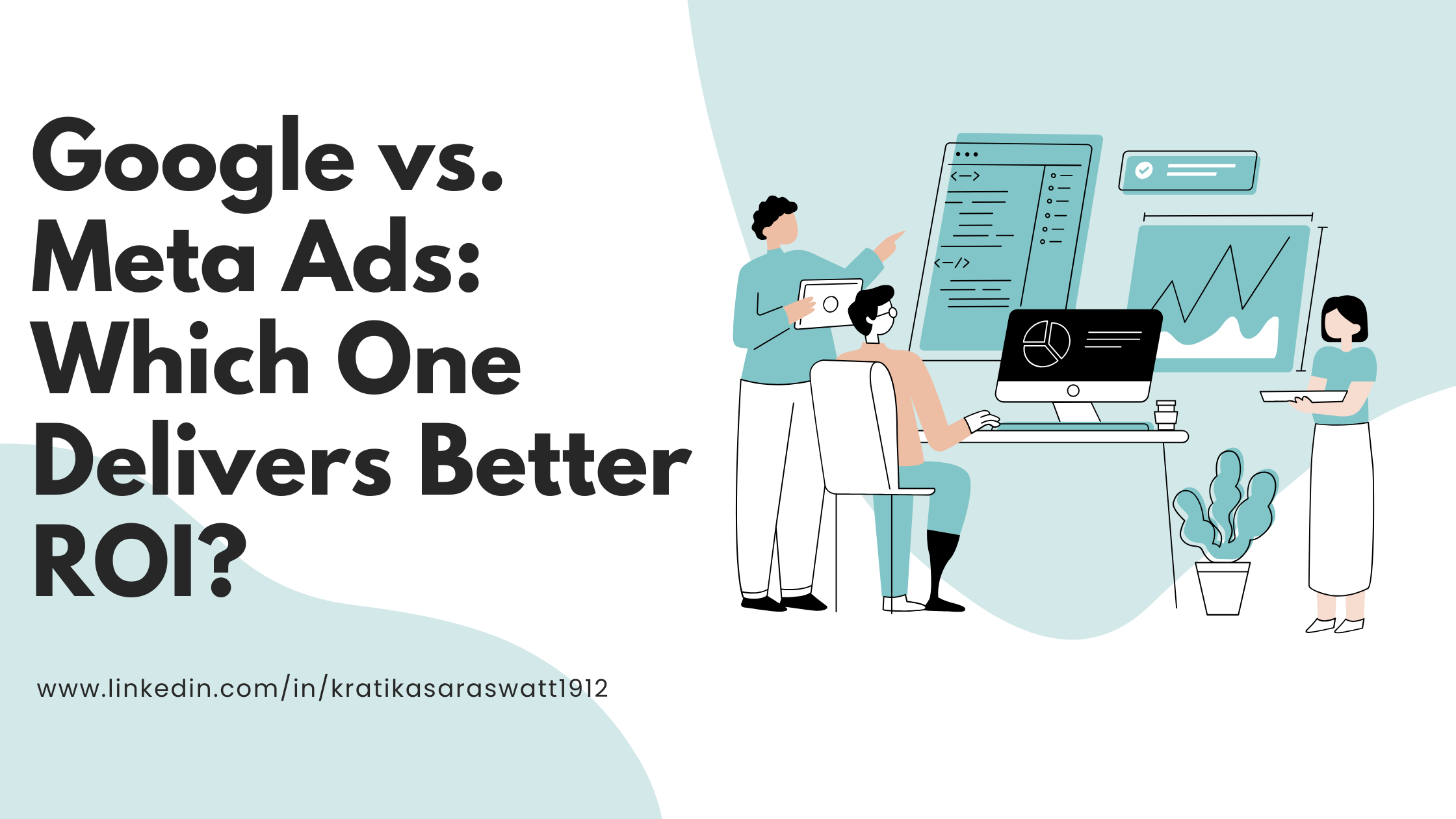Google vs. Meta Ads: Which One Delivers Better ROI?
 Kratika Saraswat
Kratika Saraswat
In the ever-evolving digital marketing landscape, businesses often face a crucial question: Which advertising platform delivers better Return on Investment (ROI)—Google Ads or Meta Ads (formerly Facebook Ads)? Both platforms dominate online advertising, but their effectiveness depends on factors like target audience, campaign goals, and budget. Let’s break it down and see which one can drive better results for your business.
Understanding Google Ads vs. Meta Ads
Google Ads: Intent-Driven Advertising
Google Ads operates primarily through search intent—meaning users are actively searching for products or services. The platform includes:
Search Ads (appearing on Google’s search results)
Display Ads (appearing on websites via Google Display Network)
YouTube Ads (video ads on YouTube)
Shopping Ads (for e-commerce product listings)
Meta Ads: Interest-Driven Advertising
Meta Ads work on a social engagement model, meaning ads are shown based on user behavior, interests, and demographics. Meta’s ecosystem includes:
Facebook Ads (in-feed, stories, marketplace, etc.)
Instagram Ads (stories, reels, in-feed ads)
Messenger Ads (ads within Messenger chats)
Audience Network (ads on partner apps and websites)
Key Factors to Consider for ROI
1. Targeting Capabilities
Google Ads: Best for capturing users with high buying intent. Keywords play a major role in reaching customers at the moment they search for a solution.
Meta Ads: Strong in audience targeting based on demographics, behavior, and interests. Ideal for brand awareness and engagement.
👉 Winner: Depends on the business type. If targeting active buyers, Google wins. If nurturing leads, Meta is better.
2. Cost-Effectiveness
Google Ads: Cost per Click (CPC) varies widely based on keyword competition, often higher for industries like finance and law.
Meta Ads: Generally lower CPC compared to Google but requires more creative effort for engagement.
👉 Winner: Meta Ads typically have lower CPC, but Google Ads provide higher conversion rates.
3. Conversion Rates & Purchase Intent
Google Ads: Users clicking on Google Ads are often ready to purchase, leading to higher conversion rates.
Meta Ads: Works well for generating leads and brand awareness but may require multiple touchpoints before conversion.
👉 Winner: Google Ads drive more direct conversions, but Meta Ads excel in brand recall and nurturing leads.
4. Ad Format Flexibility
Google Ads: Primarily text-based (search ads), but display and YouTube ads allow for visual engagement.
Meta Ads: Highly visual with carousels, videos, reels, and story ads, making them more engaging.
👉 Winner: Meta Ads win for creative flexibility and engagement.
5. Analytics & Optimization
Google Ads: Robust analytics via Google Analytics and Google Ads Manager, with real-time tracking.
Meta Ads: Strong tracking with Facebook Pixel, but privacy changes (iOS updates) have impacted effectiveness.
👉 Winner: Google Ads offer more detailed tracking, especially post-privacy updates.
Which One Should You Choose?
✅ Choose Google Ads if:
You want to capture high-intent buyers.
Your business relies on direct-response marketing (e-commerce, local services, etc.).
You have a higher budget for competitive keywords.
✅ Choose Meta Ads if:
You want to build brand awareness and engagement.
Your product is visually appealing and benefits from storytelling.
You need to reach a broader audience based on interests.
Final Verdict
For businesses focused on immediate conversions, Google Ads tend to deliver better ROI due to higher intent-driven traffic. However, for brand building, customer engagement, and cost-effective lead generation, Meta Ads shine. Ideally, a combination of both platforms works best—using Google Ads to capture ready-to-buy customers and Meta Ads to nurture and re-engage potential leads.
Subscribe to my newsletter
Read articles from Kratika Saraswat directly inside your inbox. Subscribe to the newsletter, and don't miss out.
Written by
